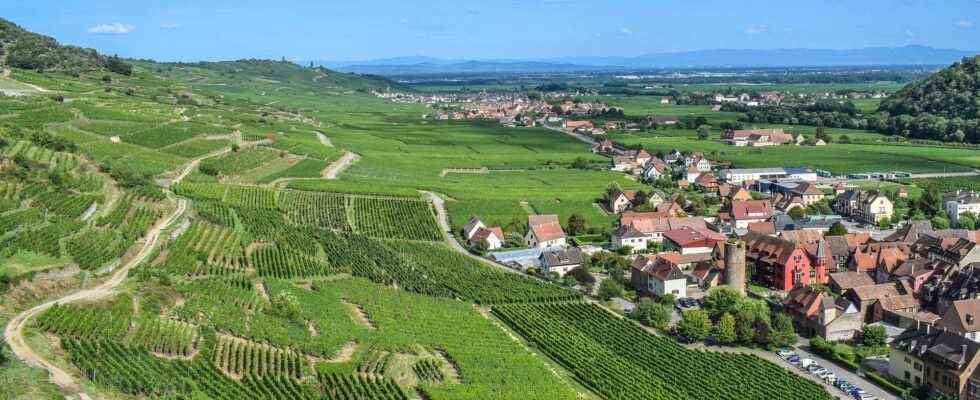You will also be interested
[EN VIDÉO] The Gauls, these fervent wine drinkers The Gauls are traditionally consumers of beer and mead, but with the Roman invasion, these Celtic people quickly became wine lovers. Imported from Italy, then produced on site, this drink quickly established itself in Gaul. Inrap (Institute for preventive archaeological research) and the Archeology center of the Rhône department tell us about its history during this documentary.
Who would have thought that a region located to the north could harbor a wine culture and the production of renowned wines? Although being the smallest wine region, Alsace has become the largest producer of white wines in France. It is however only a narrow strip of hills, which extends mainly between Mulhouse and Strasbourg. To explain this success, it must first be understood that the massifs of the Vosges on which the vineyards are planted benefit from a microclimate that is particularly favorable to this crop. The Vosges, which stretch from north to south, indeed protect the region from oceanic influences coming from the west. the climate is therefore rather dry, with strong sunshine in summer and fall.
A landscape shaped by tectonic movements
Alsace therefore owes its wine-growing success mainly to the geography of the region, inherited from a major tectonic event. The Vosges and the plain of Alsace indeed form an important tectonic structure called a sinkhole. This is part of a large complex that extends from the Mediterranean to the North Sea: the rift Western Europe, which also includes the ditches of the Bresse, the Loire, and the Limagne.
The Alsatian landscape was thus shaped around 30 million years ago, following an intense stretching of the continental crustin response to thrust from the African plate and the formation of the Alps. As it stretched, the crust sank along several large faults. The creation of this ditch leads, by isostatic response, to the uplift of what are called fault shoulders: the Vosges and the Black Forest in Germany are born.
Below these two massifs, a whole network of faults develops, which will accommodate the intense deformation that the crust undergoes at this location. The subsoil is thus fragmented into a multitude of blocks that will create a veritable geological patchwork. It is in this fracture field of the sub-Vosges hills that we find the greatest diversity of geological units. It is also there that the culture of the vine will develop, in accordance with the favorable climatic conditions.
A real geological patchwork
The basement of the Vosges hills is thus composed of limestonemarls, degrees and of conglomerates, whose ages range from 252 to 2.6 million years. These units are backed by granites, gneiss and shales of the Vosges base. This diversity represents the entire history and geological evolution of the region: from the peaks of the hercynian chain at theflood by the sea through the establishment of lakes, lagoons and rivers, all under the fire of volcanoes or the cold glaciersthe Alsatian subsoil is marked by a strong identity which also influences the culture of the vine and the taste of the wines with, of course, the sunshine, the microclimate and the know-how of the winegrowers.
Because the nature of the soil will influence the root network of the vine but also its accessibility to water. Thus, a soil composed of sand siliceous will have a large porosity, avoiding water stagnation. Conversely, clay soil will tend to maintain a certain humidity. Limestone, on the other hand, provides essential nutrients for the good health of the vine. However, it is not easy to determine exactly what role the soil plays in the final characteristics of a wine, as the factors are numerous and the balance between the different parameters important. But some have tried to make correlations between certain aromas and the geology of the vineyard.
Geology, climate and know-how for wines with unique tastes
Thus, powerful wines and astringents would be linked to a rather clayey ground. The presence of quartz, mineral found in abundance in granites for example or in sandstone soils, would bring a touch of liveliness and acidity. Finally, the limestone soils would produce rather mellow wines.
Then, everything is a question of know-how and management of the grape varieties. The Sylvaner adapts very well to deep and loamy soils to give a light and fruity wine. the Riesling present on aerated soils with a granite or sandstone composition will produce wines with finely mineral notes acids. Its taste may however vary if it comes from more marly-sandstone plots (generally well suited to Gewurztraminer) or alluvial plots.
In short, the diversity of Alsatian terrain is such that there is something for everyone!
Interested in what you just read?
